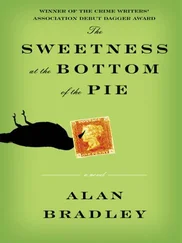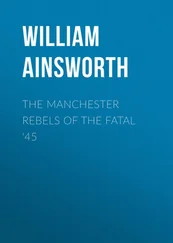226 the commission formally acknowledged:The commission wrote, “Indonesia reported its first case of H5N1 infection in poultry in Pekalongan and [the Jakarta suburb of] Tangerang Regencies in August 2003.” Media release, “Indonesia after 2 years, 99 cases,” KOMNAS FBPI, June 6, 2007.
226 “I will remember the support”:Josephine Ma and Mary Ann Benitez, “Beijing Agrees to Share Bird Flu Samples Sooner,” South China Morning Post, Dec. 2, 2006.
227 “my nationality on my sleeve”:Mary Ann Benitez, “A Giant Responsibility,” South China Morning Post, Nov. 12, 2006.
228 “We will have to look”:Ma and Benitez, “Beijing Agrees.”
228 “No nation has the right”:“Health Diplomacy in the 21st Century,” address to Directorate for Health and Social Affairs, Norway, Oslo, Feb. 13, 2007.
228 a cause for concern:Doubts about China’s openness in dealing with bird flu escalated in June 2006, when Chinese researchers disclosed that mainland China had had its first human case in November 2003, two years earlier than authorities had previously reported. See Qing-Yu Zhu et al., “Fatal Infection with Influenza A (H5N1) Virus in China,” NEJM 354, no. 25 (June 22, 2006): 2731-32.
228 “What on earth is going on?”:E-mail, Apr. 19, 2006.
228 a related outbreak in poultry:WHO’s chief representative in China, Hank Bekedam, expressed public frustration, saying, “That is not a good record.” Audra Ang, “WHO: Bird Flu Continues to Be Public Health Threat in China as New Case Reported in Military,” Associated Press, May 28, 2007.
228 without fully disarming the virus:A general warning about the difficulty of monitoring for bird flu in areas where poultry immunization is widely but imperfectly practiced can be found in Influenza Team, European Centre for Disease Surveillance and Control, “World Avian Influenza Update,” Eurosurveillance 11, no. 6 (2006): 060622.
228 exposure to this second strain, H9N2:For a fuller discussion of the dangers posed by cocirculation of H9N2 and H5N1, see Alexey Khalenkov et al., “Modulation of the Severity of Highly Pathogenic H5N1 Influenza in Chickens Previously Inoculated with Israeli H9N2 Influenza Viruses,” Virology 383 (2009): 32-38.
229 the politics of China’s public health system:Huang’s exploration of infectious-disease policy in China can be found in his writings, including “China’s Response to Avian Flu,” paper delivered at SAIS China Forum, Mar. 18, 2006, Washington; “The Political Challenges of Health Crises in China,” speech at the Conference on Asia and the Science and Politics of Pandemics, CNA Corp., Feb. 3, 2005; and “The Politics of China’s SARS Crisis,” Harvard Asia Quarterly, Fall 2003.
229 transformed the country’s health sector:See also Nan-Shan Zhong and Guang-Qiao Zeng, “Pandemic Planning in China: Applying Lessons from Severe Acute Respiratory Syndrome,” Respirology 13, suppl. 1 (2008): S33-S35.
229 did not extend to the agriculture ministry:See, for example, “Sanitising the Record; Infectious Diseases in China,” Economist, July 1, 2006.
229 the central government wasn’t sure:Notes of WHO meeting with Hui Liangyu in e-mail, Feb. 6, 2004. Two years later, the Chinese health ministry was still complaining that local authorities were failing to report possible cases of bird flu in a timely fashion. See, for example, Nicholas Zamiska, “China Bird-Flu Data in Doubt,” Wall Street Journal, Apr. 27, 2006.
229 that changed his life:For good accounts of Qiao Songju’s ordeal, see “Whistle-Blower Awaits Blackmail Verdict,” Chinadaily.com, Apr. 29, 2006; Xu Xiang, “China Plagued by Bird-Flu Cover-ups,” Asia Times Online, June 8, 2006; and Jane Cai, “Bird Flu Whistle-Blower Gets Jail Term for Graft,” South China Morning Post, July 10, 2006.
230 “Qiao Songju is a sinner”:Xu Xiang, “China Plagued by Bird-Flu Cover-ups.”
231 “block information from us”:Notes of telephone briefing for WHO headquarters, July 20, 2005.
232 “from poultry in southern China”:H. Chen et al., “H5N1 Virus Outbreak in Migratory Waterfowl,” Nature 436 (July 14, 2005): 191-92. A separate study of the Qinghai Lake outbreak published at about the same time, is Jinhua Liu et al., “Highly Pathogenic H5N1 Influenza Virus Infection in Migratory Birds,” Science 309, no. 5738 (Aug. 19, 2005): 1206.
232 No bird flu has broken out:“Chinese Official Questions Credibility of Nature ’s Article on Bird Flu,” Xinhua, July 8, 2005.
232 could have been contaminated:Nicholas Zamiska and Matt Pottinger, “Two Experts in China Dispute Bird-Flu Risks,” Wall Street Journal, July 19, 2005.
232 shuttered immediately:“Highly Pathogenic Microbe Labs Must Operate Under Government Supervision: Ministry,” Xinhua, Dec. 15, 2005.
233 a new wave of disease:G. J. D. Smith et al., “Emergence and Predominance of an H5N1 Influenza Variant in China,” PNAS 103, no. 45 (November 7, 2006): 16936-41.
233 “not based on science”:Lindsay Beck, “China Shares Bird Flu Samples, Denies New Strain Report,” Reuters, Nov. 10, 2006. This time, the research faced a wider barrage from Chinese officials, including the directors of the National Influenza Centre and the National Avian Influenza Reference Laboratory. See “Experts Refute New Bird Flu Strain Claim,” Chinadaily.com, Nov. 6, 2006; and “New US Bird Flu Report Lacks Evidence Base,” Chinadaily.com, Nov. 10, 2006.
Chapter Nine: The Secret Call
This chapter draws on interviews with current and former infectious-disease and laboratory specialists and other public health officials at WHO and the agency’s consultants in Asia, North America, Europe, and Australia. The chapter also draws on interviews with infectious-disease and laboratory specialists, public health officials, and doctors and nurses in Vietnam at the national level and at the provincial and local levels in Hanoi and Thai Binh, as well as with victims and their families. In addition, material for this chapter is drawn from internal documents from WHO and personal notes kept by several participants in the events described.
241 genetic signature of the pathogen:Q. Mai Le et al., “Isolation of Drug-Resistant H5N1 Virus,” Nature 437 (Oct. 20, 2005): 1108.
245 shifting patterns of infection:WHO Inter-country Consultation: Influenza A/H5N1 in Humans in Asia, Manila, May 6-7, 2005. On the genetic changes detected, see also WHO Global Influenza Program Surveillance Network, “Evolution of H5N1 Avian Influenza Viruses in Asia,” Emerging Infectious Diseases 11, no. 10 (Oct. 2005): 1515-21.
246 drafted a confidential report:“Reassessment of the Current Situation of Influenza A (H5N1) in Vietnam,” internal WHO report, June 2005.
248 “We’ll never have perfect data”:Personal notes of meeting.
249 “If the results are correct”:Vietnam Pandemic Assessment, internal WHO memo, June 9, 2005.
249 the conference call:The account of the conference call is based on interviews with ten of the participants, personal notes of the call kept by several participants, and WHO documents describing it.
253 diagnosing the virus:See, for example, Pui Hong Chung et. al., the Global Influenza Program, “Expert Consultation on Diagnosis of H5N1 Avian Influenza Infections in Humans,” Influenza and Other Respiratory Viruses 1, no. 4 (July 2007): 131-38; Writing Committee of the Second World Health Organization Consultation on Clinical Aspects of Human Infection with Avian Influenza A (H5N1) Virus, “Update on Avian Influenza A (H5N1) Virus Infection in Humans,” NEJM 358, no. 3 (Jan. 17, 2008): 261-73; and WHO, “Influenza Research at the Human and Animal Interface,” Report of WHO Working Group, Sept. 21-22, 2006.
Читать дальше











